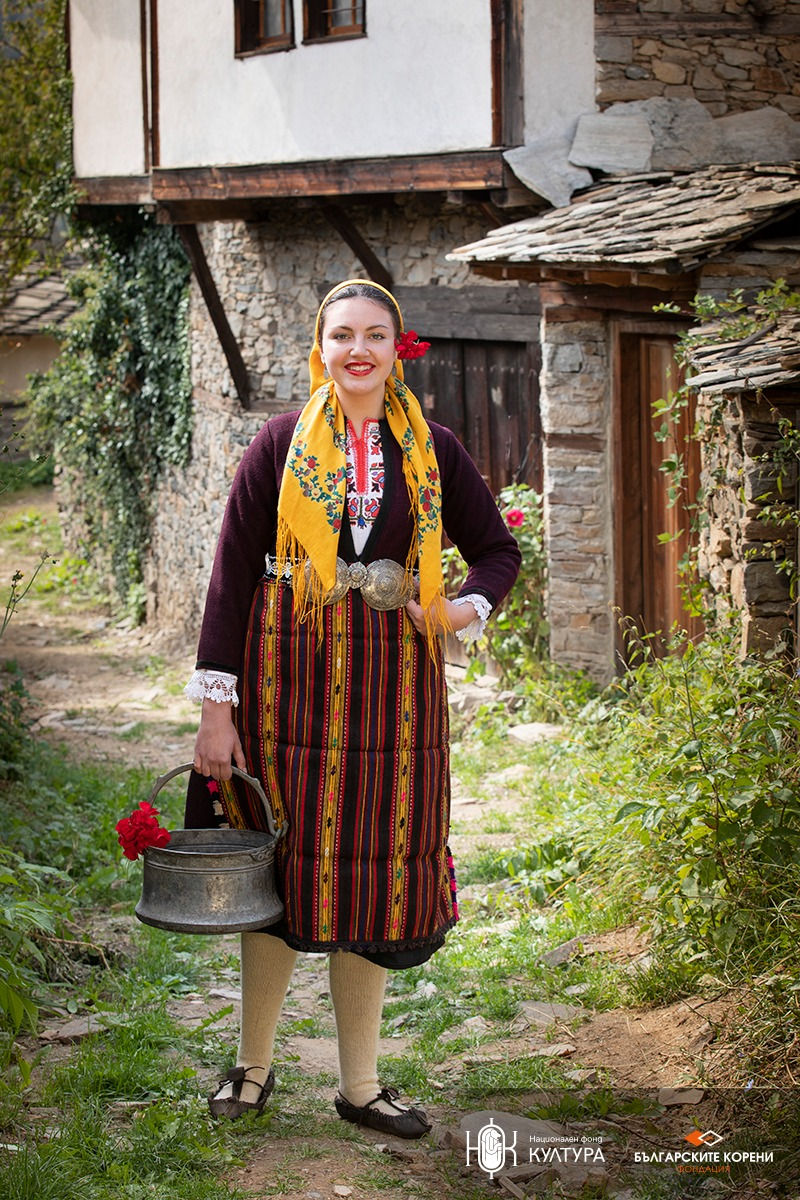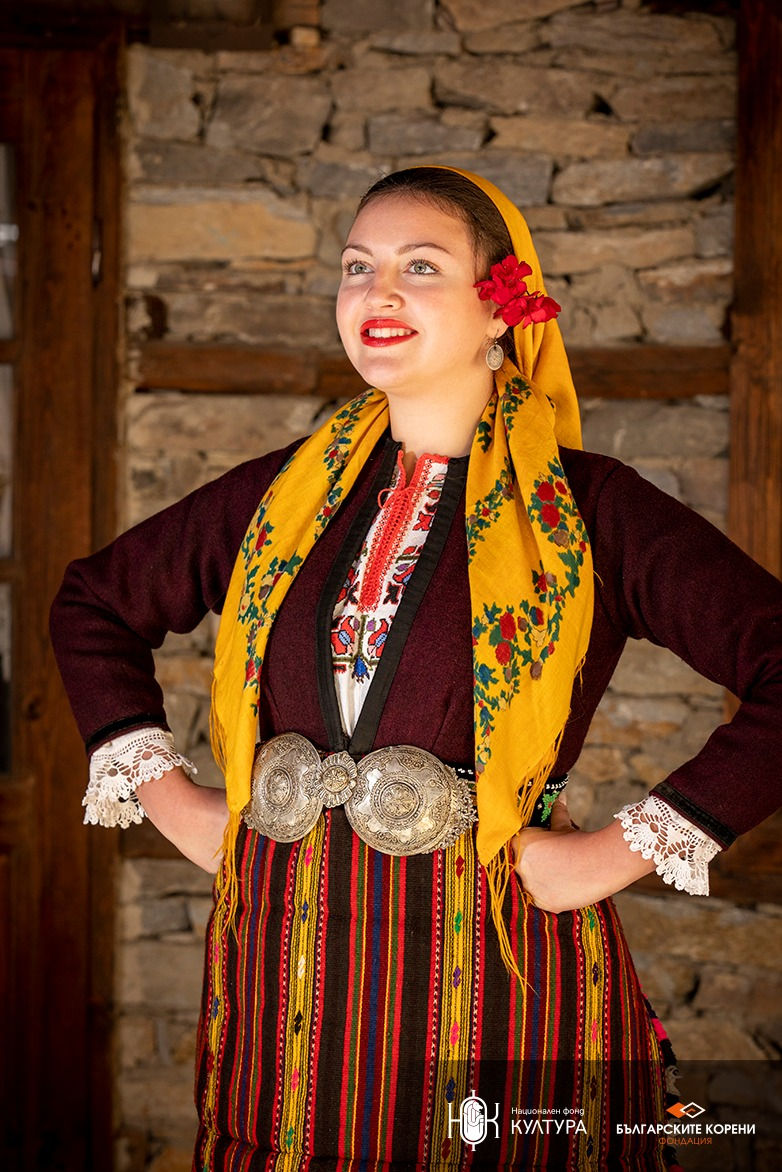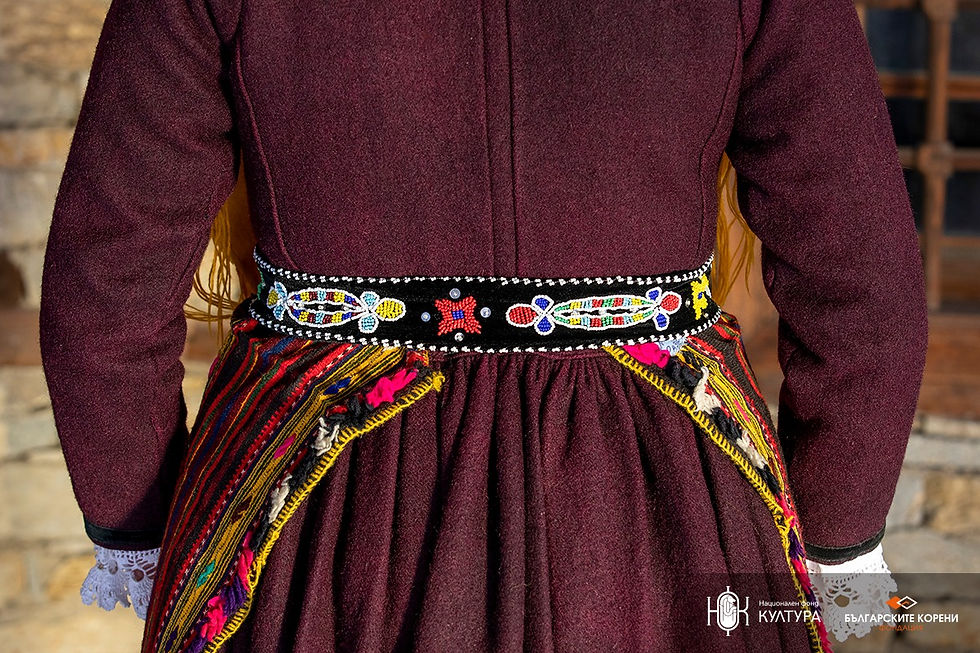"Koshorest foustan" from Razlog, the end of the XIX century
- Грозделина Георгиева-Саватинова

- Jul 2, 2021
- 3 min read
Updated: Nov 8, 2021
The end of the XIX century - the first decades of the XX century

It is made of home-woven woolen fabric with protruding large „plohi” called "gruchki".
The bosom repeats that of the aba and is V-shaped. The bosom, skirts and sleeves are lined with black velvet fabric. Below, a shirt (koshulya) with an embroidered axillary incision, called the triple stitch, is worn, and around it there is embroidery on the same „zapeski” that are on the sleeves. The sleeves are wide, embroidered with cuffs, ending with rich hand-knitted lace, which is filed under the sleeve of the dress.
Festive and bridal shirts are richly decorated with embroidery, which has a protective function. It is proudly worn by women and passed down from generation to generation to protect them from evil forces. Among the types of embroidery there are flowers, stars, gates, „rudane”, pliers, etc. So far, 28 species are known to be worn by women of different ages. The youngest - children carry wild strawberries called "zvonitsi", followed by unmarried and then married women and their mothers-in-law. By repeating the symbols of „zapeski” made more than a century ago, women are the surest guardian and successor of folk traditions and knowledge. Researchers of this folk art claim that the „zapeski” are characteristic and originate only from Razlog and are spread to other settlements in the region (such as Sapareva Banya) by emigrants.

The girdle is with "prachki" - „futa” of two fabrics, of vertical colored stripes, with small plant elements in them. The base is black, and the lines and elements are red, green, and yellow, like blood, grass, and the sun, without which nothing will be alive. At the front is a beaded belt with embroidered flowers, fastened at the front with round buckles. White socks and moccasins are worn on the feet.

The head is covered with "kushak”, decorated with yellow flowers and long fringes at the edges, which are crossed and fall freely on the shoulders. It is extremely important that a married woman must not be with her head uncovered. Only her husband can see her at home.

This is the festive attire of a young bride who can now wear buckles and cover her head with „kushak” when she goes to pour water.
Buckles are considered the most feminine jewelry, because they are worn at marriage and mark the transition to social status from a girl to a married woman. Girls cannot wear buckles, only brides, because the role of this metal jewelry is to protect their reproductive organs so that they can give the family children. An exception is the Lazarus ritual, when the girls adorn themselves with all the adornment for brides to show that they are ready to enter the new initiation.

Due to its comfort and feminine appearance, it became a favorite garment in the Razlog region until the middle of the twentieth century. The images in the old photos show how girls of the same age were photographed in costume - traditional for the area, and a "fusta" with "contosh". Such a mixture reveals to us the diversity of understanding, tastes, lifestyle, social status, but also the level of emancipation in these mountainous areas.
This festive attire is typical of ready-to-marry girls who are so prepared, go out on the square, to the round dance, go to an engagement or a wedding, etc.
Only at the wedding does the girl bring everything given to her by the groom's family. The aim is to show not only the status of the family she goes to, but also to protect the woman so that she can fulfill her most important role in life - to become a mother.

Radost Dimitrova from Razlog put on the costume. The costume is from the fund of the Historical Museum - Razlog
The project "Study of the specifics and richness of national costumes from the Razlog region in the light of cultural diversity" is realized with the financial support of the National Culture Fund under the program "Cultural Heritage".
In fulfillment of the goals of the project we present some of the most beautiful traditional costumes, typical for the Razlog valley in the last 2 centuries.
We offer our sincere thanks to our hosts from the Historical Museum - Razlog, and to all local people who helped with the realization.
Special thanks to all participants and team members who took their time and with useful information, knowledge and valuable advice made possible the work on the project. A reverence to the girls and boys from the town of Razlog, who stood in front of our camera and with their enthusiasm, youth and beauty revived for a new life the most beautiful costumes from old Mehomiya.






















Comments